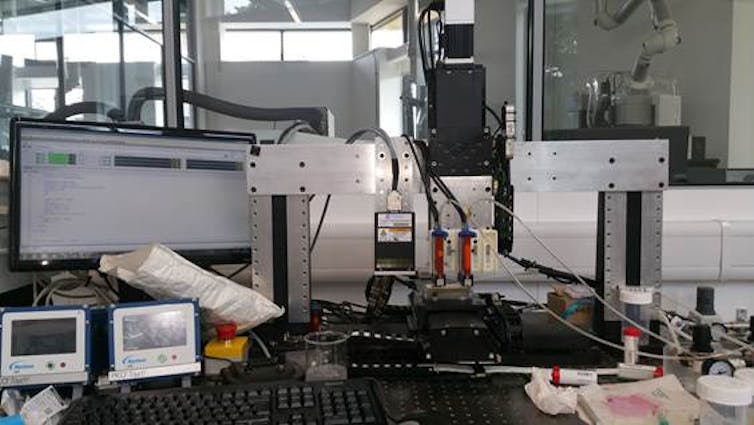It is especially tough for people with dementia, for obvious reasons. It would be convenient and safe if people could take just one pill a day – a pill that delivers all the right medication at the right time in the right dose.
Pills normally work by releasing drugs into the body when their outer shell is dissolved in the digestive system. The drug inside then enters the bloodstream. But a cleverly designed pill could have many layers. After the first drug has been released, the next shell of the pill is exposed, which then dissolves, releasing a different drug. This would continue until the entire pill is dissolved.
It would also be possible to time the delivery of each drug by placing the drugs in layers that dissolve at different rates. This is not a future dream. These “polypills” are already being made, mostly for type 2 diabetes, high blood pressure and heart conditions.
It is not difficult to mass produce these polypills. But there is a drawback. A polypill with a specific combination of drugs doesn’t necessarily help all patients. Some people might not need one of the drugs or they might need them in different doses to those in a mass-produced polypill.
Making personalised polypills through the usual drug manufacturing techniques is very expensive as they are produced in very small amounts – often for just one patient. A much cheaper way of making these polypills is 3D printing, in which thin layers of materials are built up according to the design to make a final product.
Printed pills
A 3D-printed drug has already been approved by the US Food and Drug Administration (FDA), but it is not a polypill. The FDA-approved pill is made of a water-soluble drug, but many drugs are not water soluble. Drugs either need to readily dissolve after entering the body or need to be dissolved before, for efficient absorption. And these limitations also apply to polypills.
We have recently published research on a type of material that has been used to contain water-insoluble drugs in the past, but that has never been 3D printed before. These materials are known as “surfactant-polyelectrolyte complexes”. These materials are gels made mostly of water, but their chemistry allows them to carry drugs that cannot be dissolved in water.

Surfactants are molecules with two parts: one part that likes to mix with water and the other that doesn’t. This means that surfactants tend to clump together with other molecules of the same type when they are placed in water so that the parts that don’t like water are shielded from it. These structures can store drugs inside them.
The surfactants in our study had a negative electrical charge, and the polymers (polyelectrolytes) had a positive electrical charge. So when the oppositely charged surfactants and polyelectrolytes came into contact, they were attracted to one another to form a “complex” (hence “surfactant-polyelectrolyte complexes”). That is to say we, they formed a 3D drug-carrying system.
We 3D printed alternating layers of polyelectrolyte and surfactant to make these complexes. These have the potential to store and deliver drug molecules in the form of pills. The pill can be made into a polypill simply by printing different layers with different drugs.
Not there yet
Although lots of research has already been done, this new form of drug delivery has much further to go, especially as it requires regulatory approval. These approvals take up to five years, after passing clinical trials.
Maybe in five years, some of us will get a prescription for customised polypills made on a 3D printer at our local pharmacies. People with multiple conditions will take one 3D-printed pill a day instead of a complex schedule of many pills, or perhaps even have the drugs implanted in their bodies.


